Best Football Gloves for Wide Receivers 2017

Gloves have become an important part of a football player’s equipment, especially wide receiver gloves, but in a surprisingly crowded field there’s not a lot of information about which are the best football gloves on the market. In this category in particular names seem to count for a lot, with Nike football gloves and Under Armour gloves drawing a lot of attention simply because of their dominance in other equipment for the sport. But a true evaluation requires looking at a variety of products, including gloves from Adidas, Cutters and Wilson.
The features to consider are wide-ranging and they include fit, flexibility, stiffness, stickiness, padding and wrist support. How players feel about many of those features is highly personal—some prefer a glove that comes down below the wrist with a secure Velcro wrap, while others like them to end at the bottom of the hand and they play with the Velcro open—so we’ve done our best to note the differences and allow readers can pick and choose the gloves that fit their personal tastes.
Still, the goal was to rank the gloves and provide top picks, so we connected with a sports training and performance center where three NFL players and seven high-level college players preparing for the draft—all of whom who play pass-catching positions—were working out, and we got them to test and provide feedback on the gloves. We made sure that each of the gloves in our test met NCAA and national high school limits on stickiness. We had limited sizes available, so not everyone was able to try every glove, but we collected a consensus of opinion on each and added our own observations to come up with our ranking of the best football gloves.
The Best: Wilson GST Skill Gloves
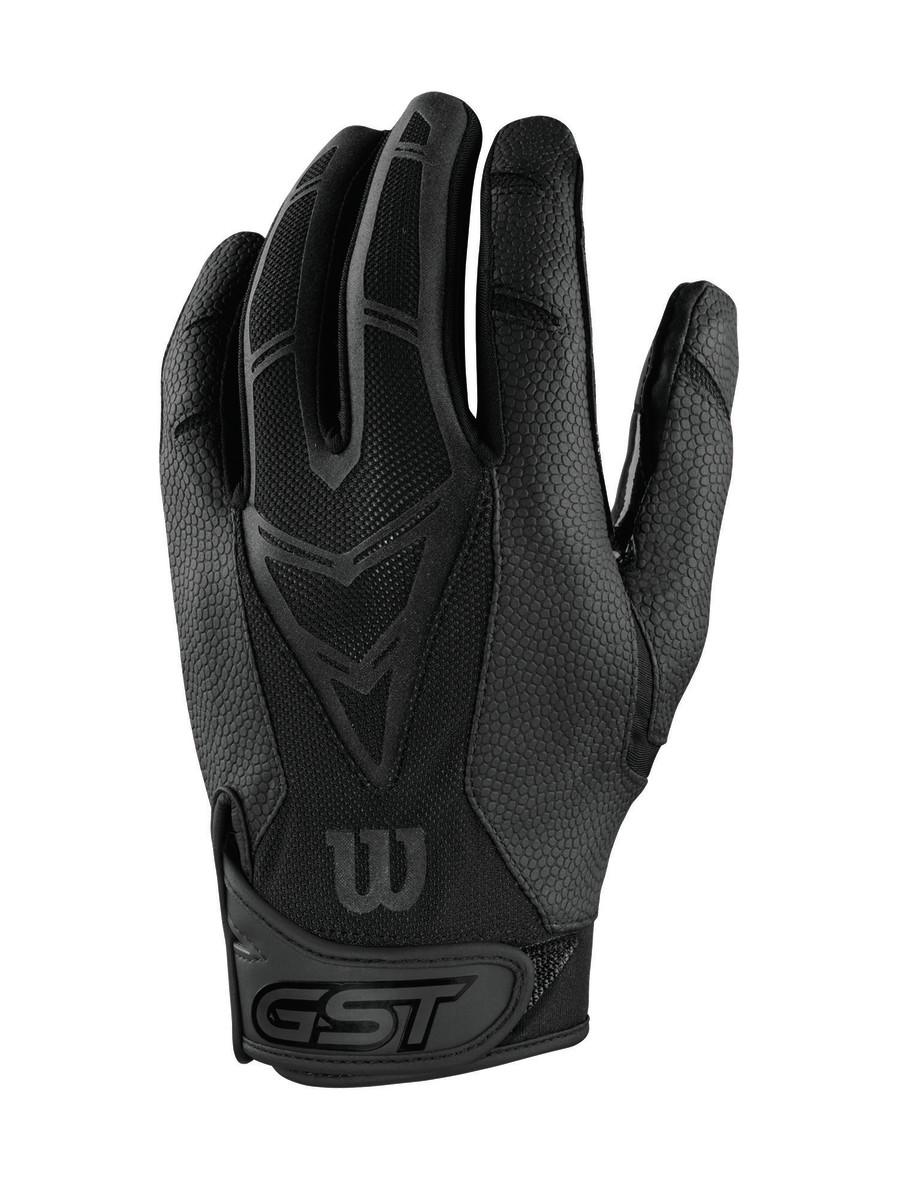
Available at amazon.com, from $27, and walmart.com, $19
The Wilson GST Skill gloves were the surprise of the day. Every single player who put on these gloves commented on how comfortable they were, with several saying they felt like “they weren’t even wearing gloves” or that the gloves “felt like a second skin.”
Beyond the comfort, the GST’s performed well, utilizing a silicone material over most of the palm and fingers that Wilson calls TackTech. The palm also features a network of small grooves—almost like the lines on your hand—which increased the flex and comfort, allowing the gloves to move more freely with the hand. The company says that these grooves also channel moisture off the surface, improving performance in wet conditions, although we didn’t do any wet testing.
Small semi-circular relief cuts in the silicon at the base of the fingers allow wide finger extension and the area between the thumb and forefinger is reinforced for durability. The back of the glove combines a breathable and stretchy poly material with something called Pro Fuse, a structural compression element that further enhances that soft, skinlike fit. The bottom of the glove extends below the hand, both front and back, and secures with a strap.
The GSTs did seem to lose some of their tackiness over the course of the day, but cleaning them with hand sanitizer restored the adhesiveness and they continued to perform well and aid catching in subsequent uses. The biggest knock on them was the name: Players just didn’t know if they could go with a brand that didn’t have the cache of one of the flashier manufacturers. Based on comfort, performance and features, they would be wise to consider it.
Nike Vapor Knit 2.0
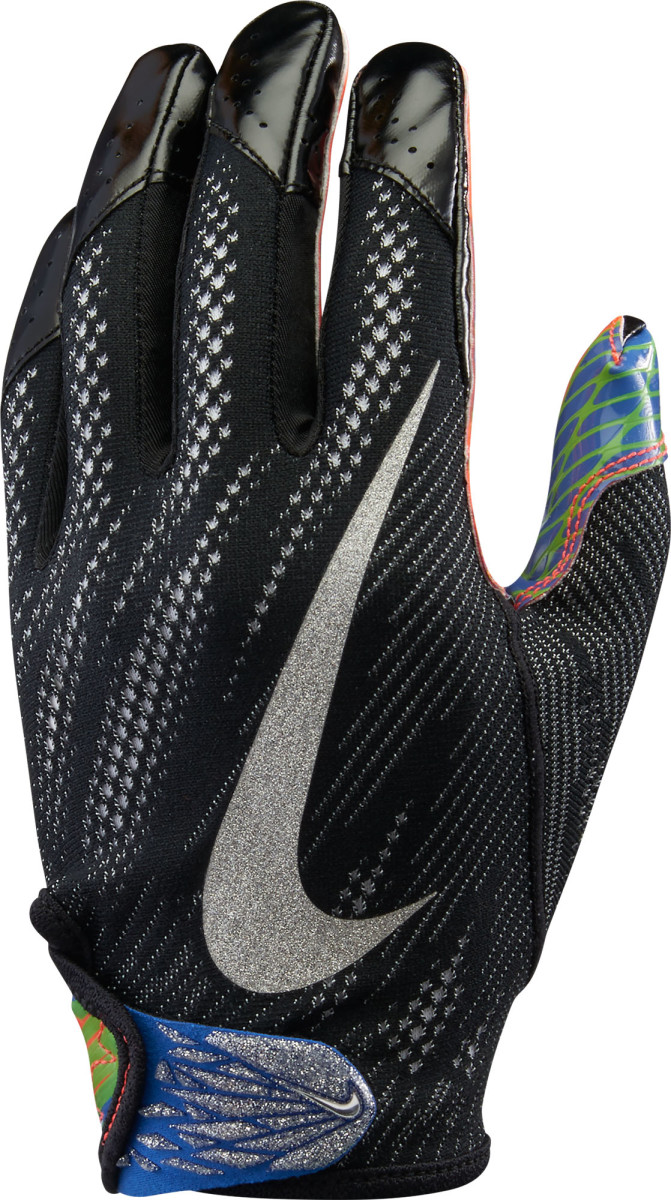
Available at nike.com, $45
The Nike Vapor Knit was the most familiar glove in the group, with several players noting it’s the glove they currently use. It’s no surprise then that it proved popular.
A silicone material the company calls MagniGrip covers the palms, and it was as good or equal to any other glove for tackiness. If they get dirty a wet wipe down restores much of the stickiness. The fingers are pre-curved, which allows for a more natural fit and less excess material, and players did seem to appreciate the way they felt.
That curve also forces the hands into a natural catching position and helps prevent the fingers from spreading too much upon impact from the ball. One receiver who played with a particularly hard-throwing quarterback—hard enough that the receiver had dislocated fingers in the past—appreciated the Vapor Knit’s ability to help slow down such fastballs.
The back is made of a single piece of knit fabric, which helps keep hands cool and reduces the number of seams. But fewer seams also means the glove won’t fit the dynamic shape of the hand in motion as well, and our testers felt the Vapor Knits didn’t quite allow them to spread their hands as easily as the Wilsons and were not quite as comfortable. The bottom of the glove did not extend past the hand, and several players said they wore them with the strap open.
The design stood out, too, including multiple colors and even glitter effects if desired. It’s pricier than some of our top choices but it provides high-level performance in a lightweight fit.
Adidas Adizero 5-Star 6.0
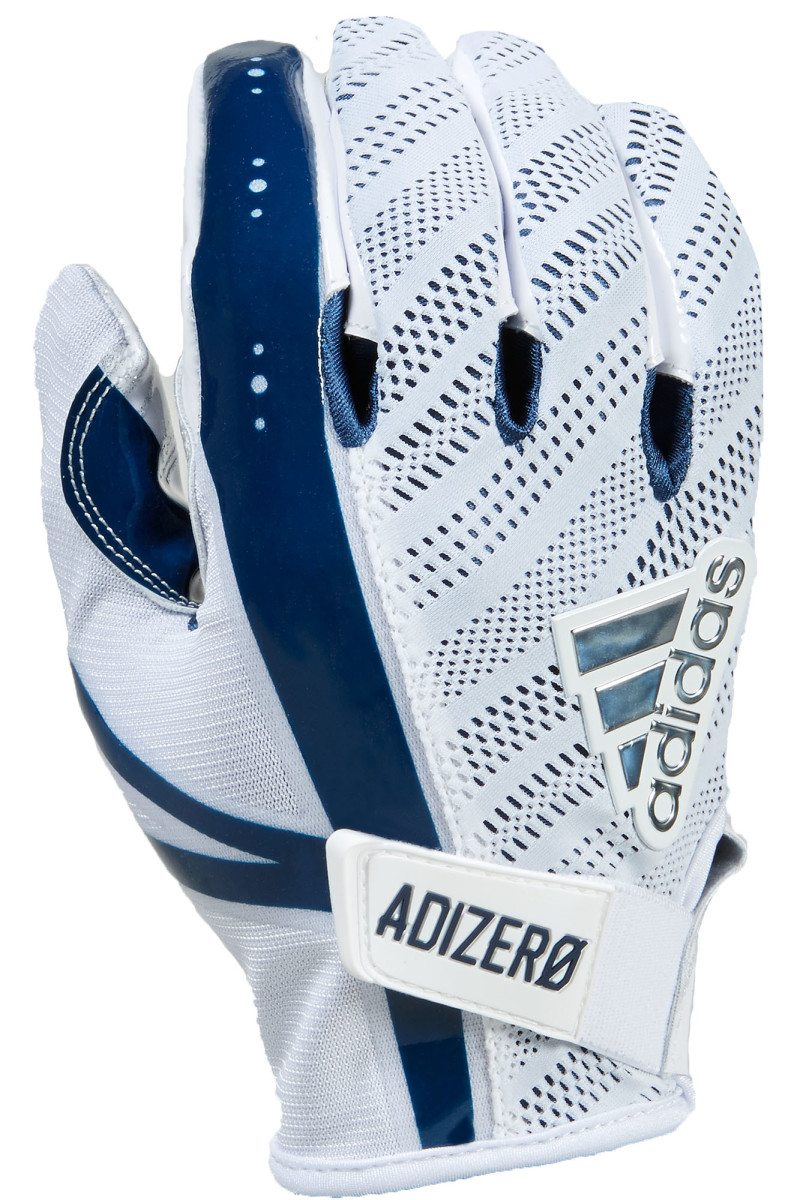
Available at adidas.com, $60
The Adizero 5-Star was rated as the second-most comfortable of the tested gloves, providing a snug fit with little weight. In fact, these were the gloves most often compared to the Wilson GTS.
The comfort starts with a wicking base layer on the inside that’s soft on the skin. The back of the glove features a patterned mesh made with Lycra spandex, a four-way stretch material that makes the 5-Star feel like it’s gripping the wearer. It also helps with the breathability, as it too wicks moisture. The index finger and the thumb featured a synthetic fabric, which doesn’t stretch or give like the rest of the material and offers some resistance upon the impact of the ball. As a further aid, the fingers and palm are covered with a silicone material that Adidas calls Grip Tack. It provided impressive tackiness and retained its grip throughout our testing.
There were only two minor knocks on the 5-Star. Some players didn’t like the strap, which stretches up across the back of the hand. Others didn’t care for the bottom, which also used a compression Lycra. The material is meant to make the edge stay tight to the wrist, but that edge cuts along the heel of the hand, and some players found that uncomfortable and distracting. Overall, though, the 5-Star provided all a player would want: It performed well and felt good.
Under Armour UA Spotlight
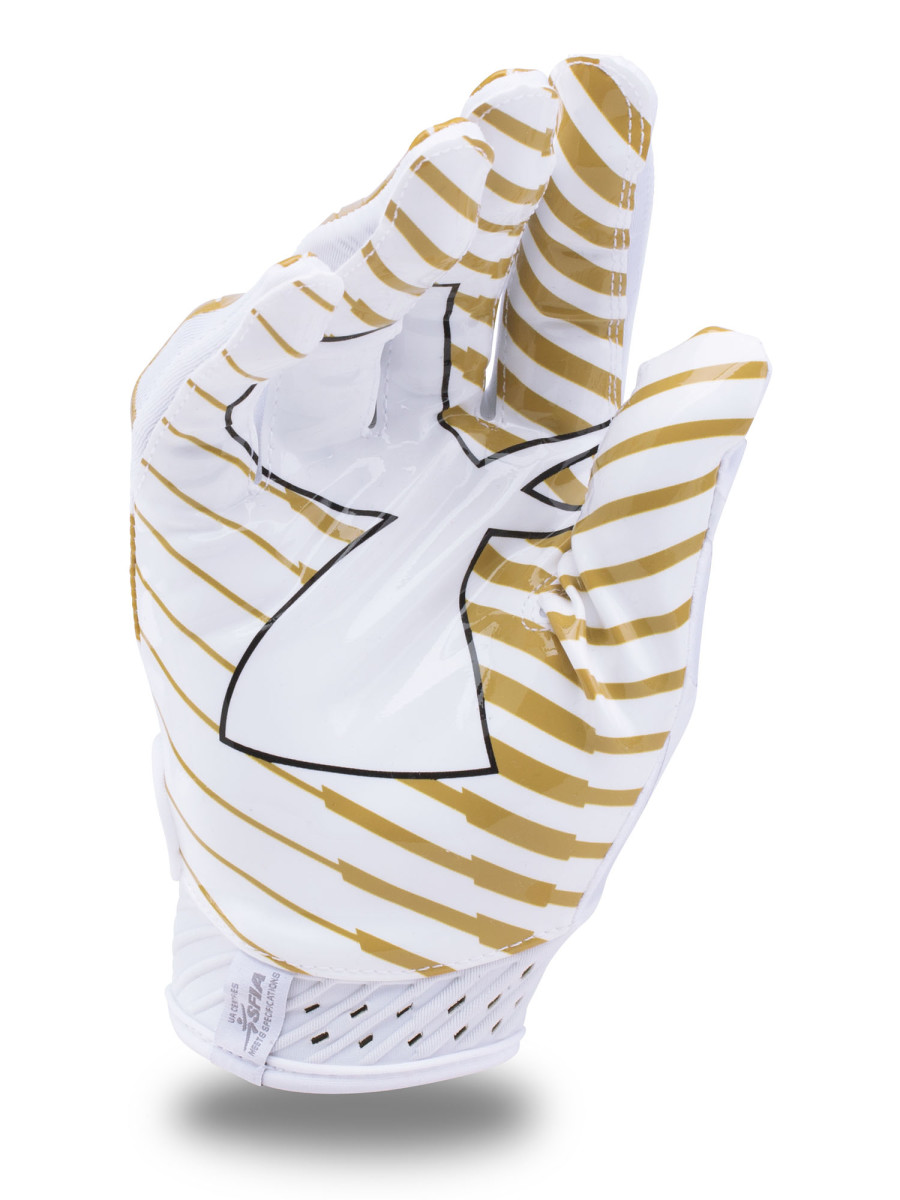
Available at underarmour.com, $45
After Nike, Under Armour was the brand most players said they currently used, and they were drawn to the company’s latest offering, the UA Spotlight. The glove goes on easily and offers a palm covered with one piece of the company’s Glue Grip, material made of a custom silicone formulation. That surface provided a tackiness on par with the other gloves and seemed to retain their grip over time.
There are panels of fabric offer some stretch along the sides and backs of the fingers and one long segment stretched down the index finger to the cuff. These help provide a snug fit and good feel, but they don’t offer quite enough give, meaning that the gloves restricted motion. Specifically, they pulled across the lower knuckles when players attempted to make a fist and prevented them from fully spreading their thumb and pinky.
A neoprene cuff extends below the bottom of the hand to provide wrist support and it offers some ventilation, as do the fabric sections, but overall this was one of the warmer gloves in the group.
Cutters Rev Pro 2.0
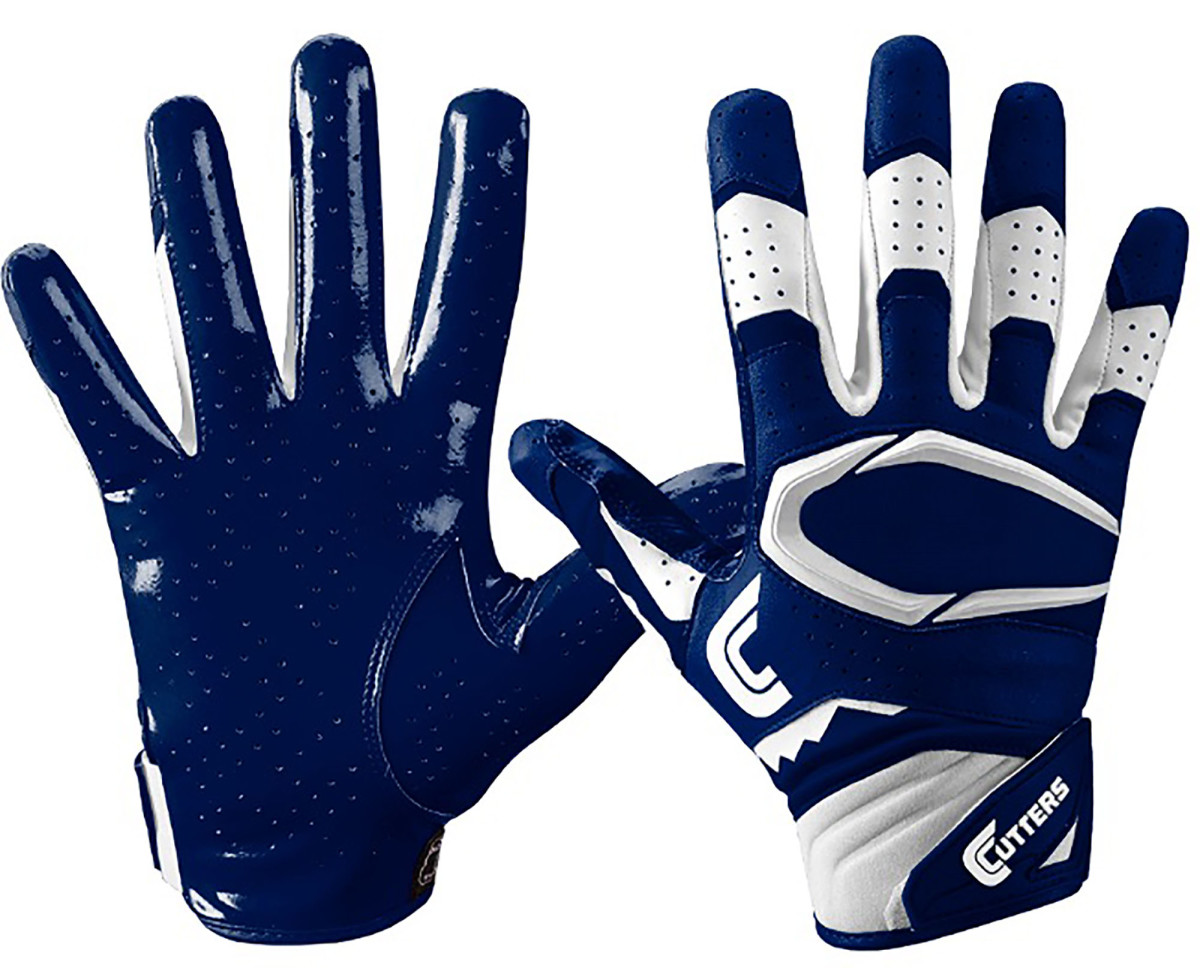
Available at amazon.com, cutterssports.com, $45
Almost every player in our testing group said they had worn Cutters gloves in high school, most often citing the brand’s durability as the reason. The company’s latest offering, the Cutters Rev Pro 2.0 offers company’s newest innovations.
It starts with grip material that covers the palm and fingers, something the company calls C-Tack, a proprietary polymer composite that offers good stickiness that self restores its tack when wiped down with a wet cloth. The gloves performed well as a catching aid and wiping them down did seem to renew any faded tack. The C-Tack has no give, though, and since it covers the entire palm and thumb, it made it hard for players to fully spread their hands.
The back is made of a stretch material but also features strategically placed leather sections on the fingers and a raised rubber circle, all of which offer support and protection. Unfortunately, both of those features restricted movement somewhat; it was hard to make a fist while wearing the glove.
The bottom of the glove, made of neoprene, extended below the hand and offered good wrist support and additional padding.
Adidas Freak 3.0
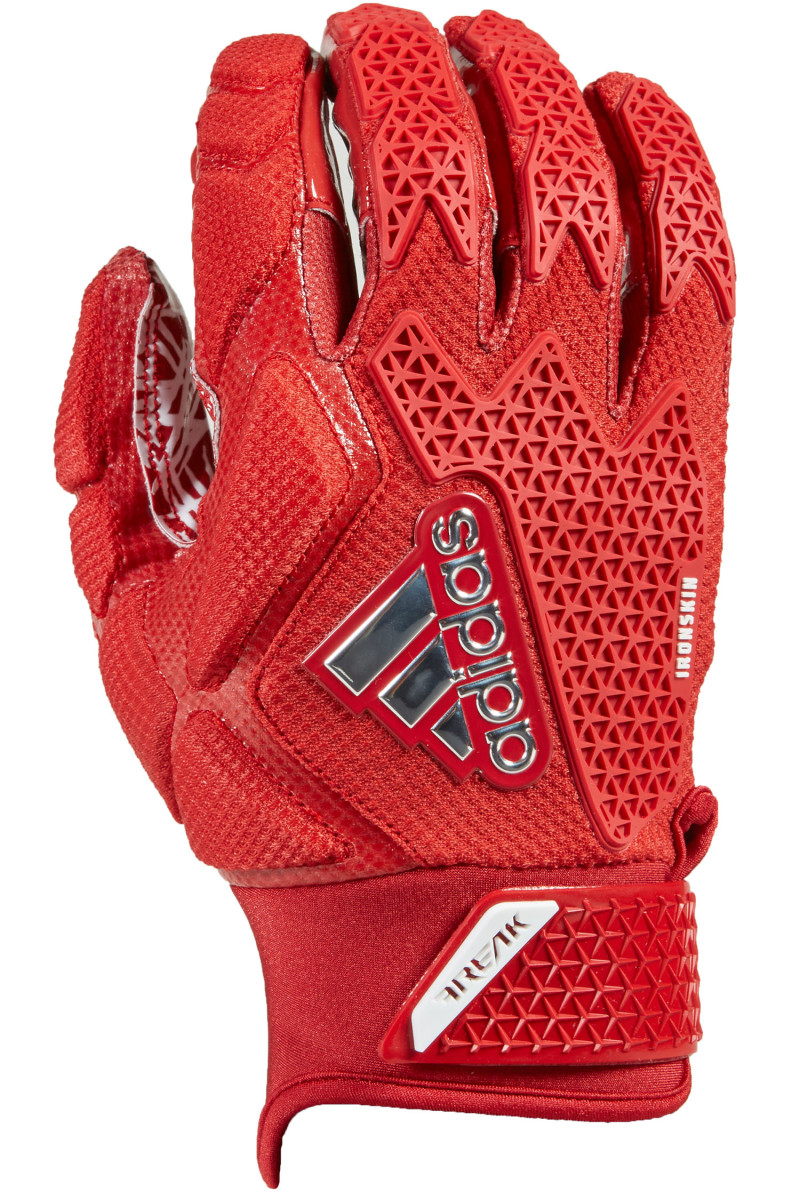
Available at adidas.com, $60
The Adidas Freak 3.0 was like no other glove in the group. The back of it was heavily padded with TPU plastic sections, padded areas and thick fabric throughout. They looked like “something from the Power Rangers,” according to one of our testers. Some found that appealing, others not. A few of the tight ends in our group, who regularly mix it up in the trenches, were particularly attracted to padding. Unfortunately, few liked the way the Freaks felt, saying that the padding was too bulky and restrictive. In particular, a couple pointed to the pads at the base of the thumb as being uncomfortable and inhibiting their catching ability.
The palm, using the same GripTack material as the Adizero 5-Star, performed well, and a neoprene section that extended below the bottom of the hand and secured with a plastic reinforced strap added significant wrist support. Although one of our testers chose them as his favorite, the rest felt these were better gloves for a lineman looking for a lightweight option (compared to even more heavily padded lineman gloves) or linebackers, who could use the protection but don’t make a living catching the ball.
Durability
All of the gloves tested are washer and dryer friendly and we ran each of them through one cycle, with any noticeable degradation in performance, fit or structure. We also asked the players in our test group how much usage they got out of a single pair. The NFL players generally wear a pair for a week of practice, switch to a fresh pair for game day and start over again the next week. This seemed to be more because they had free access to a bottomless supply, not because the gloves stopped performing. Some of the bigger-money college players said they went through about a pair a week. The players from smaller colleges, said they usually got four to six weeks out of a glove, using it in both practice and games. All of them recalled that they usually got through an entire season with one pair of gloves in high school.
Our testers
The observations of the NFL and college players in our group were collected and supplemented by SI senior editor Jim Gorant, who has tested and written about products as an editor/writer at Popular Mechanics and the deputy editor of the Men’s Journal Gear Guide. He has written a monthly product-review guide for GQ, and his other product reviews have appeared in Outside, Popular Science and Sports Afield. The gloves were also examined by SI reporter Kelvin Bias, who was a walk-on wide receiver at Arizona.
